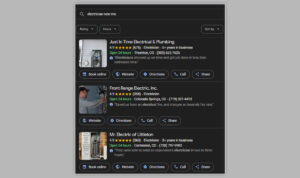Anchor text is a very important component of SEO because it enhances user experience, boosts page relevance, and builds trust with search engines. By using the right anchor text, websites can improve their search rankings and drive a lot more organic traffic.

Table of Content
Introduction: The Magic of Anchor Text
What is Anchor Text?
- Definition and Basics
- The Colorful World of Anchor Text
Why Anchor Text is the Crown Jewel of SEO
- Boosting Page Relevance
- Enhancing User Experience
- Building Trust with Search Engines
Types of Anchor Text: Not All Anchors Weigh the Same
- Exact Match
- Partial Match
- Branded
- Generic
- Image Anchor
The Do’s and Don’ts of Anchor Text
- Best Practices
- Common Mistakes to Avoid
Anchor Text in the Wild: Real-World Examples
Conclusion: Setting Sail with Anchor Text
Introduction: The Magic of Anchor Text
Ahoy, digital sailors! ☠️ Ready to dive into the beautiful sea of SEO? Today, we’re setting our sights on a treasure that’s often overlooked but holds immense power: the mystical anchor text.
No, it’s not what pirates use to dock their ships, but it’s just as valuable in the digital realm!

What is Anchor Text?
Definition and Basics
Anchor text is not complicated, it’s the clickable text in a hyperlink. Think of it as the gateway to another digital destination, beckoning users with its siren song.
In technical terms, it’s the visible, clickable text in an HTML link pointing to another web location.
The Colorful World of Anchor Text
But anchor text isn’t just a bland piece of text. Oh no! It’s the glittering sequin dress at the SEO party. It can be bold, italicized, underlined, or even rainbow-colored (if that’s your jam).
Its versatility is what makes it stand out and grab attention.
Why Anchor Text is the Crown Jewel of SEO
Boosting Page Relevance
- Context is King: Anchor text provides good context to users and search engines like Google about the content of the linked page. A well-chosen anchor text can boost the relevance of the linked page, making it more likely to rank higher in search results.
- Keyword Optimization: By using the most relevant keywords in your anchor text, you signal to search engines the topic of the linked content. This can improve the linked page’s ranking for those keywords.
Enhancing User Experience
- Guiding the Journey: Think of anchor text as a tour guide. It directs users to relevant content, ensuring they find what they’re looking for without getting lost in the vast digital ocean.
- Building Curiosity: A catchy anchor text can pique users’ curiosity, encouraging them to click and explore further.
Building Trust with Search Engines
- Natural Linking: Search engines love natural, organic linking. Using varied and relevant anchor texts can make your links appear more natural, earning brownie points with search engines.
- Avoiding Penalties: Over-optimizing or using spammy anchor text can lead to penalties. By keeping it relevant and varied, you stay in the good books of search engines.

Types of Anchor Text: Not All Anchors Weigh the Same
Exact Match
As you understand, it’s when the anchor text is the exact keyword or phrase that the linked page is trying to rank for. For example, linking to a page about “chocolate chip cookies” with the anchor text “chocolate chip cookies.”
Partial Match
Here, the anchor text contains the keyword but isn’t an exact match. Using our previous example, “delicious chocolate chip recipes” would be a partial match for a page about “chocolate chip cookies.”
Branded
This type uses the brand or website name as the anchor text. For instance, “Check out the latest recipes on [BrandName].”
Generic
These are common words or phrases like “click here,” “read more,” or “find out more.” They don’t give specific information about the linked content but are still essential for a natural link profile.
Image Anchor
When you link an image, and that image becomes the clickable link, the alt text of the image acts as the anchor text.

The Do’s and Don’ts of Anchor Text
Keep It Relevant
The anchor text should accurately represent the content of the linked page. Misleading anchor texts can frustrate users and harm your site’s credibility.
Why It’s Important:
- User Experience: Users click on links expecting to find content that matches the anchor text. If the content doesn’t match their expectations, they’re likely to leave, increasing your site’s bounce rate.
- SEO Impact: Relevant anchor texts can help improve the linked page’s ranking for related keywords.
Examples:
- Good Practice: If you’re linking to a page about “vegan chocolate chip cookies,” a relevant anchor text could be “dairy-free cookie recipes.”
- Bad Practice: Using the anchor text “healthy salad recipes” to link to a page about “fried chicken dishes.”
Vary Your Anchors
Avoid using the same anchor text for all your links, especially if they point to the same URL. Instead, use a mix of exact match, partial match, branded, generic, and other types of anchor texts.
Why It’s Important:
- Natural Link Profile: A varied anchor text profile looks more organic and natural to search engines, reducing the risk of being flagged for manipulative link-building practices.
- Avoiding Penalties: Repeatedly using the same anchor text, especially if it’s an exact match keyword, can make your links appear spammy and may lead to search engine penalties.
Examples:
- Good Practice: If you’re linking to a page about “vegan chocolate chip cookies” multiple times in different articles, you can use varied anchor texts like “egg-free cookies,” “delicious vegan treats,” and “baking without dairy.”
- Bad Practice: Always using the anchor text “vegan chocolate chip cookies” for every link pointing to that page.

Common Mistakes:
Avoid Over-Optimization
Over-optimization occurs when you excessively use exact match keywords as your anchor text, making your link profile appear unnatural.
Why It’s Important:
- Penalty Risks: Search engines, especially Google, have algorithms to detect over-optimized anchor text profiles. Sites found guilty can face ranking drops or even manual penalties.
- User Experience: Over-optimized anchor texts can make content read unnaturally, detracting from the user experience.
Examples:
- Good Practice: If your target keyword is “organic skincare,” use a mix of anchor texts like “natural beauty products,” “skincare without chemicals,” and “organic beauty tips.”
- Bad Practice: Always using the anchor text “organic skincare” for every link, especially when it doesn’t flow naturally within the content.
Being Too Vague
“Click here” tells users and search engines nothing about the linked content. Be descriptive but concise.
When users see “click here,” they must rely on surrounding content for context, which isn’t always clear. Similarly, search engines prefer anchor texts that give a hint about the linked page’s content. By being more descriptive, you can guide users better and provide search engines clearer signals.
Overusing Exact Match
While it’s powerful, overusing exact match anchor text can appear spammy and lead to penalties.
Imagine reading an article where every other sentence urges you to explore “the best vegan chocolate chip cookies” using that exact phrase. It feels forced, right? Search engines think so, too. They might penalize sites that overdo exact match anchor texts, suspecting them of trying to game the system.
Ignoring Internal Links
Don’t just focus on external links. Internal linking with appropriate anchor text can boost SEO and user experience.
Think of your website as a spider web. The stronger and more interconnected the threads (links), the more robust the web. By using relevant anchor texts for internal links, you guide users to explore more of your content, increasing page views and decreasing bounce rates.
Plus, it signals to search engines the relationship between different pages, helping them understand your site’s structure.
Anchor Text in the Wild: Real-World Examples
Have you ever seen a “Discover the 10 best beaches in the world” link and felt an irresistible urge to click? That’s the power of compelling anchor text in action!
From “Find out why cats are the internet’s favorite” to “Unearth the secrets of the Bermuda Triangle,” captivating anchor texts are everywhere, guiding our online journeys.
Conclusion: Setting Sail with Anchor Text
As we dock our digital ship, it’s clear that anchor text is the unsung hero of the SEO world. It’s the compass that guides users, the treasure map for search engines, and the wind in the sails of digital marketers.
So, next time you’re charting your SEO course, make sure to weigh anchor with the right text. Fair winds and following seas, fellow digital sailors! ☠️
Thanks for reading.
Laurence Zimmermann
More information about our Web Design services and pricing here.
Related Articles
SEO For Affiliate Marketing: The Golden Map!
Diib Review – The SEO Tool That’s Making Waves
10 Top SEO Strategies To Boost Your Website Ranking
Enhance Your SEO Strategy: 10+ Top Directories For Better Rankings
220+ SEO Blog Post Ideas to Strengthen Your Authority
20 Top Affiliate Marketing Strategies To Elevate Your Game
Source: fractalmax.agency



